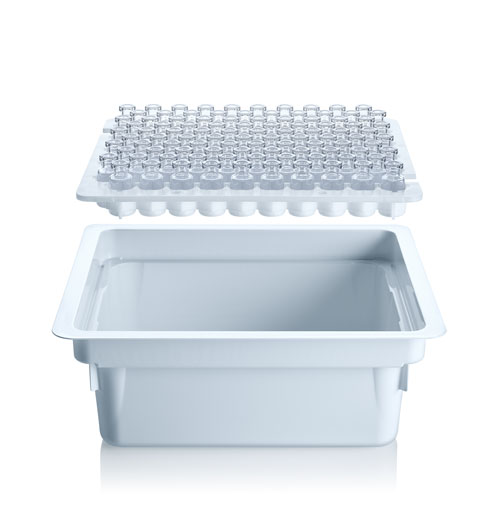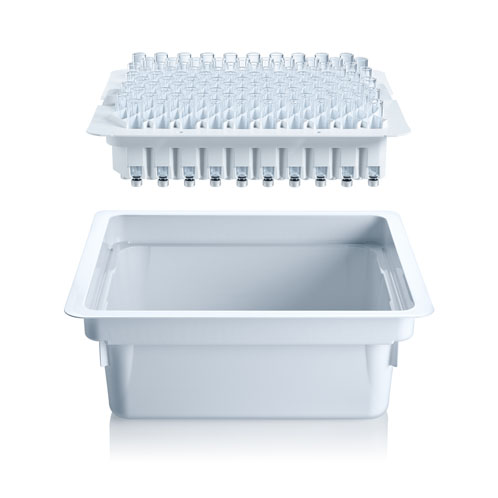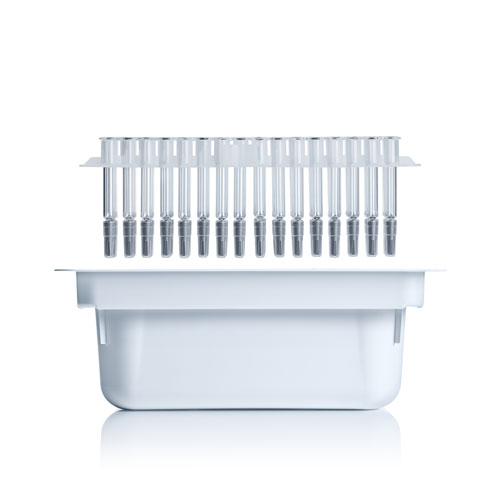The development of glucagon-like peptide-1 (GLP-1) drugs for type 2 diabetes and obesity has brought hope to patients in terms of improving their health and quality of life.
The new molecular entities in clinical trials may bring even better treatments for these and other diseases. Although some of these drugs come in oral dosage form, most are administered by subcutaneous injection.
The primary container for injectable drugs — whether vial, cartridge or syringe — is crucial to maintain drug safety and efficacy through filling, storage and administration.
Trends in diabetes and obesity
The World Health Organization calls diabetes a global epidemic and says that it may cause a rise in premature mortality — even as early deaths from other non-communicable diseases are decreasing.1,2
The potential complications of untreated diabetes are serious, including kidney failure, heart attacks, stroke, loss of vision and damage to the nerves that increases the risk of limb amputation.
Although there are several types of diabetes, more than 95% of those with the disease have type 2; the upshot is that a person’s blood glucose levels become too high because the pancreas doesn’t make enough insulin (the hormone that regulates glucose) or the body’s insulin is not working effectively.
Type 2 diabetes can be treated with insulin therapy or a range of other drugs that work in different ways to lower glucose synthesis, increase the body’s insulin production or help the body to use insulin more effectively.
The prevalence of diabetes, particularly type 2, has been on the rise globally and is expected to continue to do so. The global age-standardised prevalence of type 2 diabetes is projected to increase from nearly 6% in 2021 to 9.5% in 2050, affecting more than 1.27 billion people.3
The growing numbers are driven by trends in obesity and demographic shifts. Obesity, which is a major risk factor for type 2 diabetes and other diseases, is also on the rise; its worldwide prevalence nearly tripled between 1975 and 2016.4
In 2021, 52.2% of global type 2 diabetes disability adjusted life-years were attributable to a high body mass index (BMI).3 Obesity is prevalent in both high-income countries and in low- and middle-income countries, particularly in urban areas, and affects a growing number of children as well as adults.4

There is a growing movement among patients, healthcare providers, insurance providers and broader society to recognise obesity as a chronic and progressive disease that is affected by multiple medical and psychosocial issues.5
There is also an increased understanding of how effective obesity management solutions and weight loss can treat type 2 diabetes and delay disease progression. At the same time, there is an increasing availability of antiobesity medications.
A barrier, however, is ongoing misperceptions about the role of medical interventions in obesity care. Although diabetes and obesity have been become increasingly prevalent, new developments are giving patients options and changing the way diabetes can be treated.
New medications — GLP-1-based diabetes treatments and GLP-1-based obesity drugs — have been authorised for use in the US, EU and other regions by the relevant regulatory agencies in the past decade.
The effectiveness of these drugs has recently been driving more conversations about type 2 diabetes management and treatments for obesity as a chronic disease.
Treating diabetes and obesity with GLP-1s and multireceptor agonists
Glucagon-like peptide-1 receptor agonists (GLP-1 RAs or GLP-1s), also known as incretin mimics, bind to the GLP-1 receptor to increase insulin production and reduce blood glucose levels.
GLP-1s effectively reduce A1C levels (a key blood-sugar measure used to diagnose and manage diabetes and prediabetes).6 In certain patient populations with type 2 diabetes, some GLP-1s are recommended as first-line therapies to lower A1C levels and reach glycaemic targets.6
Importantly for weight-loss indications, GLP-1-based drugs also appear to reduce appetite and signal feelings of fullness. The US FDA approved the GLP-1 semaglutide to treat type 2 diabetes in an injectable version in 2017 and in an oral version in 2019.7
In 2021, the FDA approved semaglutide for chronic weight management in obese/overweight adults with at least one weight-related condition.8 Semaglutide is also authorised in the EU, UK and other regions.
A new class of medicine is a dual agonist that binds to both GLP-1 and the glucose-dependent insulinotropic polypeptide (GIP) receptor.
Tirzepatide, a single peptide that binds to both GLP-1 and GIP receptors, was approved by the FDA in 2022 to treat type 2 diabetes; in late 2023, it was approved for chronic weight management in obese/overweight adults with at least one weight-related condition.9,10
Tirzepatide is authorised in the EU for type 2 diabetes and, in late 2023, the European Medicines Agency recommended that its approval be expanded to include obesity.11
In the UK, the Medicines and Healthcare products Regulatory Agency approved a four-dose pen of tirzepatide for type 2 diabetes and weight management in early 2024.12
Other multireceptor agonists are in development. For example, a triple agonist, retatrutide, targets GIP, GLP-1 and glucagon. A study of retatrutide in participants with obesity and cardiovascular disease began enrolment for Phase III clinical trials in 2023.13

As another example, a GLP-1/glucagon dual receptor is being developed to treat obesity and metabolic dysfunction-associated steatotic liver disease (previously termed non-alcoholic fatty liver disease).14 Small molecule, non-peptide GLP-1s, which are dosed orally, are also in development.
Although the effectiveness of these treatments is stirring excitement, current roadblocks to greater use include their expense and whether they are covered by healthcare insurance providers.
Coverage of weight loss drugs is currently limited, but voices such as the American Medical Association and leaders in the American Diabetes Association are calling for insurance to cover obesity treatments.15,16
Increased coverage could lead to greater demand. Another challenge is that the approved drugs have experienced periods of limited availability owing to increased demand, such that these and other GLP-1-type drugs have been listed on the FDA’s Drug Shortages list.
Compounded versions, although not FDA approved, may be permissible by law under certain conditions; but, the FDA has encountered problems with illegally marketed and counterfeit drugs and has cautioned consumers about compounded versions.17
Drug developers and manufacturers are working to ensure drug supply, including the medical devices and primary packaging containers used to store and administer the injectable drugs.
Injection devices for diabetes and obesity drugs
Injectable peptide hormone drugs used to treat diabetes (including insulin, GLP-1s and other drugs) are filled into vials, cartridges or syringes during an aseptic filling process.
Prefilled syringes and cartridges can be used in delivery devices designed for safe and easy self-administration, providing convenience to the patient for regular, ongoing injections.
These advanced drug delivery systems can also be used for injectable GLP-1-based obesity drugs. Single-dose prefilled syringes may have a staked needle and can be used for direct injection or loaded into an autoinjector.
Cartridges, which can be designed to hold multiple doses, can be loaded into an injector pen for accurate dosing during self-administration (with a new needle for each dose).
Pens can be reusable or single-use. Some GLP-1 drugs can be formulated with preservatives for multiple-dose containers, whereas others are only formulated for single-dose containers.18
The cartridge or syringe must be carefully designed and manufactured for compatibility with the injection device.
Container quality
The primary drug container (syringe, cartridge or vial) is an essential part of keeping a drug safe and effective during filling, storage and administration. Injectable medications are packaged in containers made from type 1 borosilicate glass or a pharmaceutical-grade polymer.
Peptides such as GLP-1s are sensitive drugs that benefit from advanced container solutions to enhance stability and minimise interactions between the drug and the container or closure.
Vials for peptide drugs
During the drug product development process, the container is carefully evaluated for suitability with the drug formulation. When evaluating a vial for a drug, extractables and leachables testing assesses the risk of substances that could migrate from the container or the closure into the drug product.
Leachable substances could affect the stability of the drug and might reduce its shelf-life. The closure system, which can include rubber or elastomeric parts, can also be a source of leachables and must be examined as part of the entire container.
Some types of glass vials have inner surfaces that are designed to reduce leachables compared with standard type 1 glass. Consistent quality of the overall vial is also important to reduce or avoid interactions with the drug on the interior of the vial and to maintain a strong, damage-resistant exterior.
Cartridges for peptide drugs
Glass cartridges are used for peptide drug storage and administration (or self-administration) using an injectable pen injector. Type I borosilicate glass has high chemical resistance, ensuring that drugs have a long shelf-life.
The manufacturing and quality control processes should ensure that cartridges have precise dimensions, so that they function as designed in the injection device. In addition, cartridges with high cosmetic quality (minimal defects) will reduce the risk of rejection of the filled cartridge during the final inspection process.
Syringes for peptide drugs
Prefilled syringe formats can be used in autoinjectors for GLP-1 drugs. Prefillable glass syringes and their closure systems (including the plunger) must be carefully designed and manufactured to ensure minimal drug–container interactions.
Syringes with ultra-low particles and residuals will promote drug stability and ensure a long shelf-life. Prefillable syringes for autoinjectors must also seamlessly integrate with the injection device; tight control of the syringe dimensions is essential to meet the interface specifications with the device.
In addition, low and uniform silicone levels will contribute to consistent gliding forces and injection times.
Efficient fill-and-finish
Efficient filling without damage or breakage is important to enable a consistent supply of injectable drugs. Filling lines can be designed to use containers in bulk (washed and sterilised at the filling location) or presterilised ready-to-use (RTU).
RTU containers, which are nested in a tub, avoid glass-to-glass contact, which leads to advantages regarding reduced particle generation, a lower risk of breakage and reduced rejects owing to cosmetic defects.
RTU filling has lower capital expenses and can reduce total cost of ownership compared with bulk filling. In addition, RTU reduces qualification steps, which can accelerate time-to-market.19
Different formats (vials, syringes or cartridges) are available as RTU containers and a standardised platform allows the flexibility to switch between container formats.
Reliable container supply
Ensuring a reliable supply of the approved container — whether vial, cartridge or syringe — is crucial to meet the rapidly growing demand for GLP-1 drugs.
The manufacturing process involves forming the glass tubing and converting it into containers using automated processes — supported by camera-controlled inspection.
To meet the projected industry volumes, Schott Pharma is already working to expand its production capacity globally. An expansion in Germany is ahead of schedule and production capacity is ramping up.
Plus, the expansion of sterile cartridge production capacity in Switzerland and sterile vial production capacity in the US are on track. In addition, a new site for refillable glass syringes is being built in Hungary and production is expected to start in mid-2024.
Sustainability
Using materials and energy sustainably is a responsibility that manufacturers are ready to take on. Product carbon footprint can be reduced by examining the whole lifecycle and identifying ways to achieve climate neutrality and net zero emissions.
Improving energy efficiency, using green electricity, reducing waste and making supply chains more efficient are a few examples. Designing future products and packaging for recyclability is another goal.
The Alliance to Zero is a non-profit industry alliance of pharmaceutical supply companies who are collaborating to decarbonise the value chain for injection devices.
In addition to decarbonising production processes, the Alliance aims to introduce circularity into materials. Collaboration will be important to finding circular solutions.
Conclusion
New treatments for type 2 diabetes and obesity offer exciting opportunities to make a difference in the lives of many patients. Designing the container and the device for effective drug delivery is essential.
And, as the use of GLP-1-type medications grows, ensuring a reliable supply of high-quality containers that will perform consistently in fill-and-finish operations is also crucial. Supply chain partners must work together; there’s no time to waste.
References
- https://cdn.who.int/media/docs/default/diabetes/gdc_need _to_know_web.pdf.
- www.who.int/news-room/fact-sheets/detail/diabetes.
- www.thelancet.com/journals/lancet/article/PIIS01406736(23)01301-6/fulltext#%20.
- www.who.int/news-room/fact-sheets/detail/obesity-and-overweight.
- https://diabetes.org/obesity.
- https://doi.org/10.2337/cd22-0027.
- www.fda.gov/news-events/press-announcements/fda approves-first-oral-glp-1-treatment-type-2-diabetes.
- www.fda.gov/news-events/press-announcements/fda- approves-new-drug-treatment-chronic-weight-management-first-2014.
- www.fda.gov/news-events/press-announcements/fda-approves-novel-dual-targeted-treatment-type-2-diabetes.
- www.fda.gov/news-events/press-announcements/fda-approves-new-medication-chronic-weight-management.
- www.statnews.com/2023/11/10/eu-regulator-recommends-diabetes-drug-mounjaros-approval-to-include-obesity/.
- www.gov.uk/government/news/four-dose-mounjaro-kwikpen-approved-for-diabetes-and-weight-management.
- https://trials.lilly.com/en-US/trial/405675.
- https://ir.altimmune.com/news-releases/news-release-details/altimmune-presentation-pemvidutide-clinical-data.
- www.ama-assn.org/press-center/press-releases/ama-urges-insurance-coverage-parity-emerging-obesity-treatment-options.
- www.statnews.com/2022/12/27/combat-diabetes-treat-obesity-like-other-diseases/.
- www.fda.gov/drugs/postmarket-drug-safety-information-patients-and-providers/medications-containing-semaglutide-marketed-type-2-diabetes-or-weight-loss www.ondrugdelivery.com/how-diabesity-is-shaping-the-world-of-self-injection-devices/.
- https://pharmaceuticalmanufacturer.media/pharmaceutical-industry-insights/pharmaceutical-packaging-news/improved-fill-and-finish-processes-reduce-the-total-cost-of-/.


